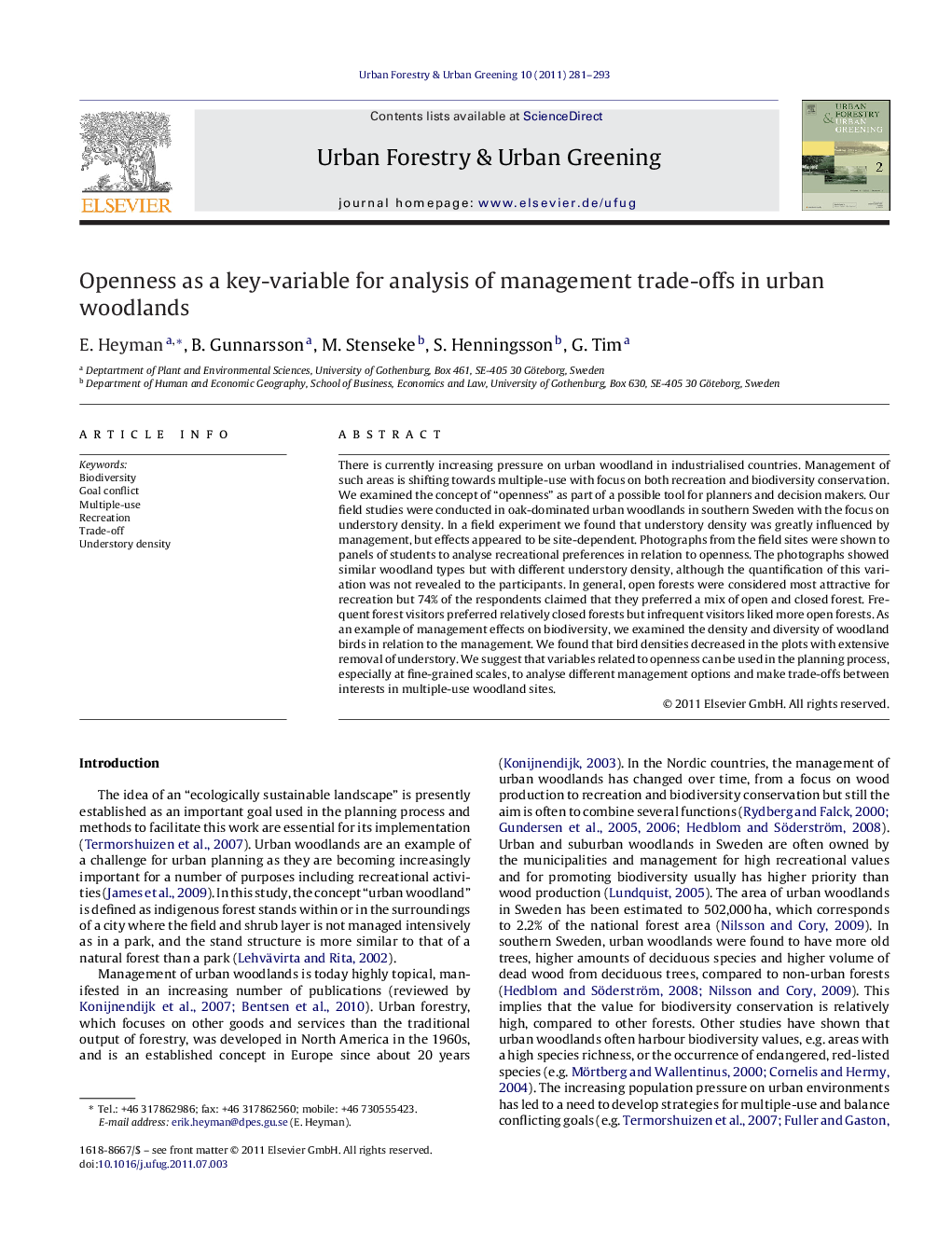| Article ID | Journal | Published Year | Pages | File Type |
|---|---|---|---|---|
| 94140 | Urban Forestry & Urban Greening | 2011 | 13 Pages |
There is currently increasing pressure on urban woodland in industrialised countries. Management of such areas is shifting towards multiple-use with focus on both recreation and biodiversity conservation. We examined the concept of “openness” as part of a possible tool for planners and decision makers. Our field studies were conducted in oak-dominated urban woodlands in southern Sweden with the focus on understory density. In a field experiment we found that understory density was greatly influenced by management, but effects appeared to be site-dependent. Photographs from the field sites were shown to panels of students to analyse recreational preferences in relation to openness. The photographs showed similar woodland types but with different understory density, although the quantification of this variation was not revealed to the participants. In general, open forests were considered most attractive for recreation but 74% of the respondents claimed that they preferred a mix of open and closed forest. Frequent forest visitors preferred relatively closed forests but infrequent visitors liked more open forests. As an example of management effects on biodiversity, we examined the density and diversity of woodland birds in relation to the management. We found that bird densities decreased in the plots with extensive removal of understory. We suggest that variables related to openness can be used in the planning process, especially at fine-grained scales, to analyse different management options and make trade-offs between interests in multiple-use woodland sites.
